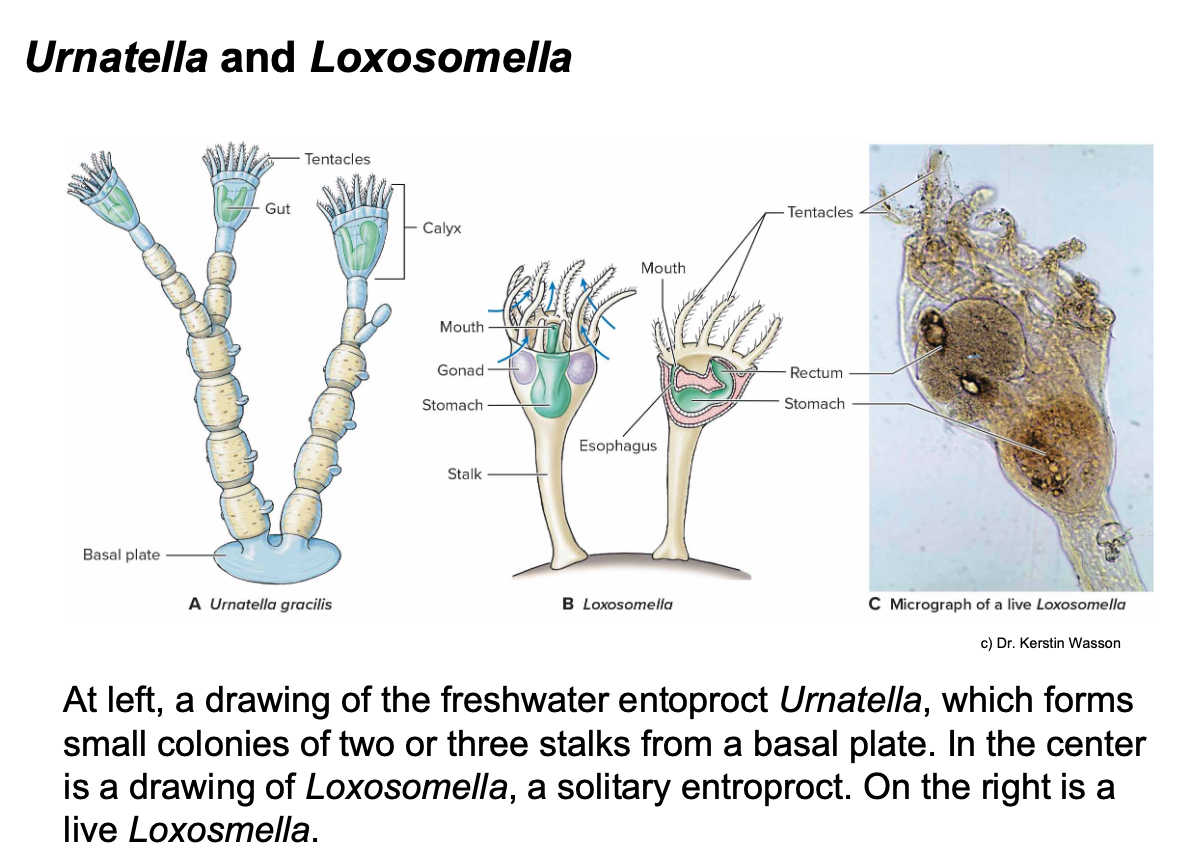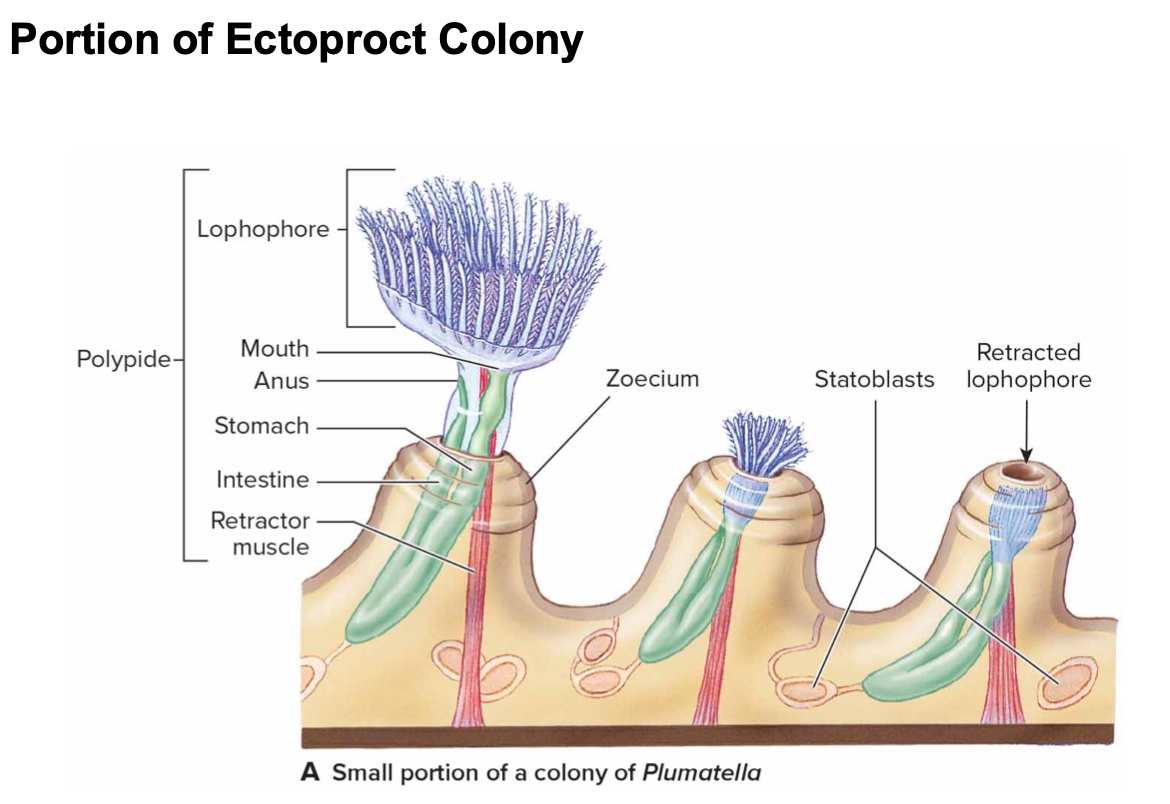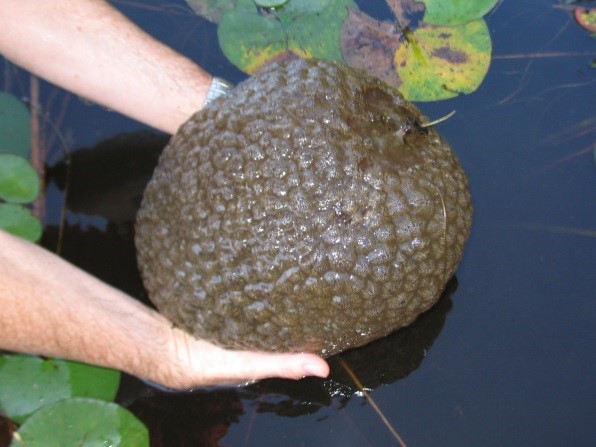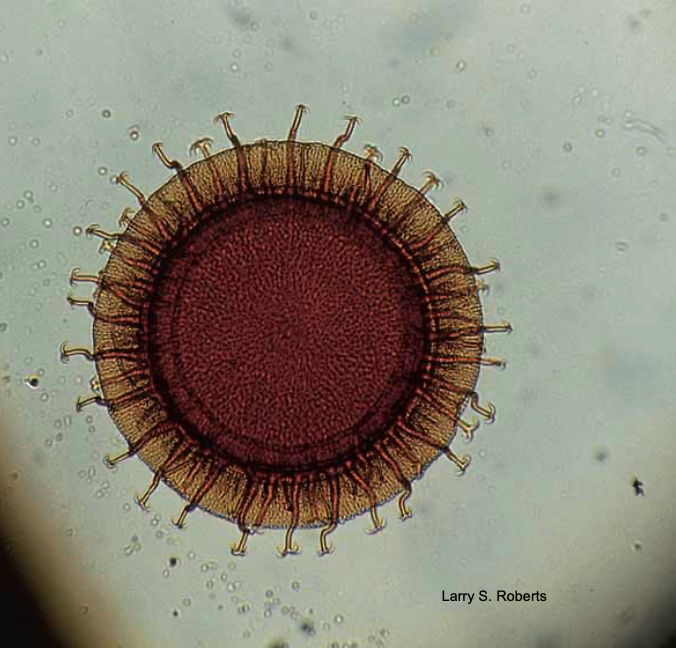Chapter 9: Worms Part 2
5.0(1)
5.0(1)
Card Sorting
1/23
Earn XP
Description and Tags
Study Analytics
Name | Mastery | Learn | Test | Matching | Spaced |
|---|
No study sessions yet.
24 Terms
1
New cards
Lophotrochozoan
These are worms that have a lophophore and trochophore
2
New cards
Lophophore
a ciliated feeding device
3
New cards
Trochophore
a larval form
4
New cards
Protostome
This is an animal where the blastopore develops into the "mouth". Opposite of deuterostomes
5
New cards
Phylum Cycliophora
- Lives on mouthparts of marine decapod crustaceans (lobsters)
- Only 3 species known
- Extremely small
- Eats bacteria
- Reproduces both sexually and asexually
- Only 3 species known
- Extremely small
- Eats bacteria
- Reproduces both sexually and asexually
6
New cards
Phylum Entoprocta
- Mostly are colonia
- Less than 100 species
- Very small (less than 5 mm)
- Found under rocks and running water as well as living on shells and other things
*- U-shaped digestive tract
*- Cup shaped body
- Digest through diffusion
- Less than 100 species
- Very small (less than 5 mm)
- Found under rocks and running water as well as living on shells and other things
*- U-shaped digestive tract
*- Cup shaped body
- Digest through diffusion
7
New cards
Libbie Henrietta Hyman
received her Ph.D. in 1915, wrote The Invertebrates, responsible for a lot of classification of invertebrates
8
New cards
Phylum Ectoprocta (Byrozoans)
- Also called bryozoans or moss animals
- Both fresh and marine
- Colony builders that encrust firm surfaces (shells, bottoms of ships, pipes)
- Have muscles that pull lophophore in
- Have an operculum like mollusks
- Have a Zooid and Cystid
- Use tentacles to feed
- Mostly hermaphroditic
- Don't have organs
- Both fresh and marine
- Colony builders that encrust firm surfaces (shells, bottoms of ships, pipes)
- Have muscles that pull lophophore in
- Have an operculum like mollusks
- Have a Zooid and Cystid
- Use tentacles to feed
- Mostly hermaphroditic
- Don't have organs

9
New cards
Encrust
Animals that settle on rocks, substrates, and hard surfaces. Bryozoans called Membranipora can encrust and host many tiny zooids
10
New cards
Polypide
This is the portion of a bryozoan that contained most of the organs and the lophophore

11
New cards
Zooid
individual that comprises a feeding polypide and case-forming cystid in bryozoans
12
New cards
Zoecium
a calcareous home that houses a tiny zooid or polypide in byrozoans
13
New cards
Operculum
This contains the lophophore and is extended out into the water in order to feed
14
New cards
Magnificent Bryozoan (pectinatella magnifica)
This is an invasive species of bryozoans where the colonies bind together in large clumps that look to be frog eggs

15
New cards
Bryostatin-1
This is a anti-cancer treatment for tumors and other cancer related issues that is found on Bugula neritina bryozoans
16
New cards
Cystid
a case that forms over the zooid for protection
17
New cards
Statoblast
a kind of bud that survives over winter when a bryozoan colony dies in autumn

18
New cards
Phylum Brachiopoda
- Considered living fossils
- Commonly called "lamp Shells"
- Look like bivalved mollusks
- Attached, bottom-dwelling marine forms that inhabit shallow water
* Perfect symmetry
- Still have a lophophore
- Commonly called "lamp Shells"
- Look like bivalved mollusks
- Attached, bottom-dwelling marine forms that inhabit shallow water
* Perfect symmetry
- Still have a lophophore
19
New cards
Lingula
an inarticulate brachiopod that normally occupies a burrow, has a long "tongue like" foot
20
New cards
Class Articulata
class of brachiopods connecting hinge with an interlocking tooth-and-socket
21
New cards
Class Inarticulata
class of brachiopods held together by muscles only, allows shells to move
22
New cards
Phylum Phoronida
- Found in colder waters
- Create tubes that they secrete to live in and anchor
- Don't contain a heart but contain hemoglobin
- Most are hermaphrodites while some are dioecious
- Create tubes that they secrete to live in and anchor
- Don't contain a heart but contain hemoglobin
- Most are hermaphrodites while some are dioecious
23
New cards
Phylum Nemertea
- Ribbon worms
- Most are marine
- Can have multiple bright colors
- Some live in secreted gelatinous tubes
- Ciliated epidermis
- Carnivorous
- Has a complete digestive tract
* Has a proboscis
- Most are marine
- Can have multiple bright colors
- Some live in secreted gelatinous tubes
- Ciliated epidermis
- Carnivorous
- Has a complete digestive tract
* Has a proboscis
24
New cards
Nemertean Proboscis
an eversible organ capable of stabbing another animal by turning inside out, end is sharp and allows neurotoxin into it’s prey